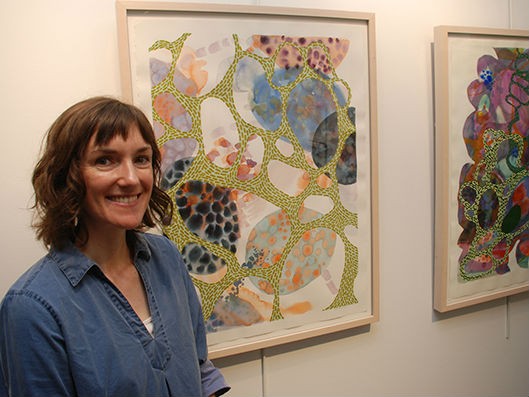When people think of a stereotypical art gallery, they may only envision paintings hanging on the walls.
An exhibit in the Roy C. Moore Art Gallery on the University of North Georgia's Gainesville Campus is much more. Visitors may be part of the interactive exhibit with their hands, lips and mouths.
Visitors to the exhibit "Tiny Enormous: Art Exploring Microbes" will be asked to share their microbes, or germs, for the scientific and artistic exhibit. Funded through a Presidential Innovation Award from UNG President Bonita Jacobs, the interactive exhibit will feature the germs along with visual art interpreting them.
The gallery is inside the Continuing Education and Performing Arts Building on the Gainesville campus.
Visitors will be asked to volunteer their microbes in three ways: a touch plate, a kiss plate or a saliva swab. The microbes will then be grown and added to the exhibit for people to see at a later date.
"To paraphrase writer Zachary Slobig and photographer Julia Bennett 'One elegant and beautiful image can draw someone to be curious about science. It can make us want to learn more," said Erin McIntosh, an assistant professor of visual arts who is collaborating on the project with her own touch.
McIntosh has depicted microbes with five watercolor and gouache, an opaque watercolor. For inspiration, McIntosh looked at textbook and journal pictures of microbes and viewed them through microscopes in a UNG science lab. She then let her imagination run wild before painting her interpretation of them.
McIntosh also solicited 12 other educators, students and artists to paint their own visions of microbes and send them to UNG for the exhibit.
"The idea was these tiny things have an enormous impact on Earth," McIntosh said. "Without them we wouldn't exist."
Through this project, McIntosh said she has become more aware of the multitude of microbes in and on the human body. That is the lesson Evan Lampert, an associate professor of biology at UNG, hopes visitors to the exhibit will learn.
"Microbes are everywhere. Pathogenic microbes are everywhere, and they are potentially harmful," he said. "But most of what is out there is not harmful and even good for you."
Davison Sangweme, an assistant professor of biology at UNG, agreed.
"Most microbes clean up the environment and recycle nutrients in the ecosystem," he said. "Some are also used to add value and flavor to food through fermentation as in yogurt, cheese, wine, and brewing."
The exhibit will be on display until Sept. 28 with the closing reception from 2 p.m. to 4 p.m. that day. Gallery hours are 10 a.m. to 4 p.m. Monday through Wednesday, 10 a.m. to 7 p.m. Thursday, and 10 a.m. to 3 p.m. Friday.
For more information about future art exhibits, visit the websites of the Bob Owens Art Gallery on the Dahlonega Campus, the Roy C. Moore Art Gallery on the Gainesville Campus, and the Oconee Campus Art Exhibits.

http://accesswdun.com/article/2017/9/576142/microbes-transform-into-art-at-ung-art-gallery-on-gainesville-campus
